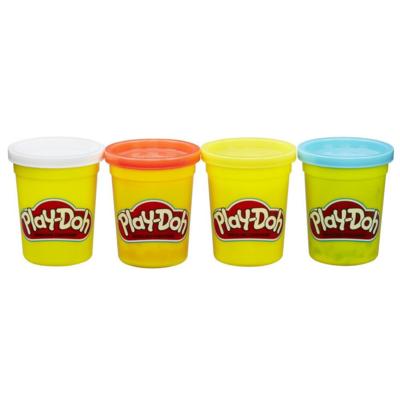What Does Play-Doh Smell Like? - Hasbro Files Trademark Application for ‘Unique’ Play-Doh Scent
How would you describe the exact scent of Play-Doh? Would you recognize it based on scent compared to other modeling compounds? The answer to both of these questions is crucial to Hasbro, owner of the Play-Doh brand, in gaining trademark registration for the scent of Play-Doh.
When many people think of trademarks they immediately think of a brand like Nintendo or a famous mascot like Mario. However, US trademark law also allows registration for non visual trademarks like sounds, colors and scents. They are less common though due to the difficulty in registering them. In order to do so, an applicant must prove that (1) the scent is not a functional feature, meaning that it is not essential to the use or purpose of the product; and (2) the scent of the product has become distinct through continuous sales and consumer recognition.
The first U.S. trademark registration for a scent, a “high impact, fresh, floral fragrance reminiscent of Plumeria blossoms” used in connection with “sewing thread and embroidery yarn”, was issued in 1990. Since then, while a number of applications for scent trademarks have been filed, less than a handful have been added to the principal register. The TMEP (Trademark Manual of Examining Procedure) states that “the amount of evidence needed to establish acquired distinctiveness of a scent mark is substantial.”
Proving distinction for a scent trademark can be challenging because a scent is not tangible. As a result, the exact scent described on Hasbro’s trademark application is extremely important. This is because in order to prove that Play-Doh’s scent has become distinct, they must show that consumers identify Play-Doh as the source of that scent. Proving the infringement of a scent trademark can be equally challenging due to the intangible nature of both scents.
Non functionality, is one element that Play-Doh will likely have an easier task of proving this time compared to the 50th anniversary special edition Play-Doh cologne. Trademark law does not allow anyone to exclusively control a useful feature, like the scent of a cologne or perfume. Similar to the scented yarn, Hasbro claims that Play-Doh’s scent is simply an arbitrary and non essential feature of the product.
Despite the lack of many successful trademark registrations for scents, several attempts can help to provide some insight into Hasbro’s chances with Play-Doh. The scented yarn trademark was issued partly because the product faced a lack of any competition and the “applicant promoted their product as having a scented nature.” In this case, Hasbro has little competition for its Play-Doh brand, however, it does not market the scent of its product. Hasbro’s lack of marketing the ‘unique’ scent of Play-Doh’s as a source identifier does not disqualify it from receiving registration, it is just a factor that has been given weight in the limited number of scent trademark cases. Play-Doh has other options such as providing substantial survey data, which the TMEP states is “a valuable method of showing” acquired distinctiveness.
So what does Play-Doh smell like? According to Hasbro’s trademark application, it is “a unique scent formed through the combination of a sweet, slightly musky, vanilla-like fragrance, with slight overtones of cherry, and the natural smell of a salted, wheat-based dough.” What do you think?

